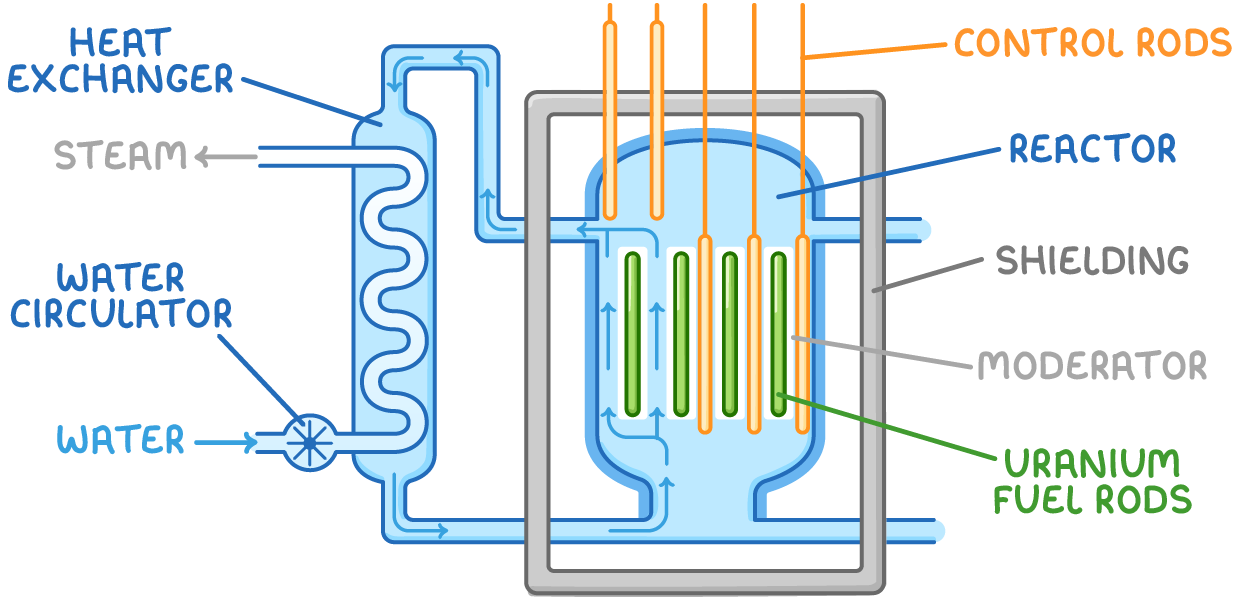Nuclear Reactor
This lesson covers:
- The mechanism of nuclear fission reactions and their application in reactors
- The function of moderators in managing fission reactions
- The concept of critical mass for sustaining fission reaction rates
- The role of control rods in nuclear reactors
- The process of heat extraction from reactors for electricity production
- The analysis of nuclear power's advantages and disadvantages
Nuclear fission reactions in reactors
Nuclear reactors produce energy through nuclear fission reactions. This process involves the splitting of the nuclei of heavy atoms, such as uranium.

Within reactors, rods containing the uranium isotope U-235 are subject to fission when they absorb neutrons. Each fission event generates additional neutrons, heat energy, and radioactive by-products. Each neutron released by the fission reaction is able to go on to cause further fission with other U-235 nuclei.
Moderators enable controlled fission
To initiate fission, neutrons must travel at a specific speed. A moderator within the reactor decelerates the neutrons to this necessary speed. Common materials used as moderators include water and graphite.
Once moderated, neutrons can trigger further fission reactions given an adequate supply of fissile fuel, leading to a self-sustaining nuclear chain reaction.
Critical mass and steady reaction rates
Critical mass refers to the minimal amount of fuel required to maintain a chain reaction. Below this threshold, the reaction will diminish. Reactors are designed with a fuel quantity surpassing this critical mass to guarantee a constant fission process.
Nevertheless, unchecked fission can release energy too rapidly, posing explosion risks. Thus, reactors employ mechanisms to manage these reactions.
Heat removal and electricity generation
The fission process generates heat, which is carried away by a coolant fluid circulating within the reactor. This thermal energy is then used to produce steam that powers turbines, generating electricity.
Evaluating nuclear power
Nuclear power provides a continuous, low-carbon energy source but carries risks, including potential radioactive waste leaks and reactor meltdowns. Secure, long-term isolation of radioactive materials is essential. Moreover, the construction of nuclear facilities is intricate and expensive, and local opposition to reactor sites can pose additional challenges. Decision-makers must consider these issues when authorising nuclear reactors.